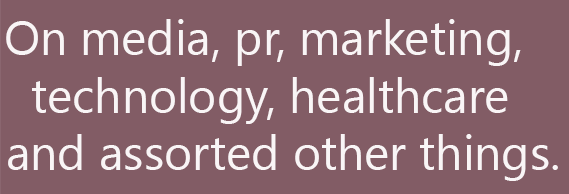No one really knows how the game is played
The art of the trade
How the sausage gets made
We just assume that it happens
The Room Where it Happened, from Hamilton
(First in a series taking readers inside the practice of Public Relations and the various ways in which companies can use it to establish thought leadership, raise awareness, establish credibility in the marketplace – which is particularly key for emerging companies with little or no name recognition or even reference-able clients – and support, even drive sales.)
Public relations (PR) is often misunderstood, when it is even understood at all — ironically, it is public relations itself that could use better PR. To some, public relations, or “spin,” is synonymous with propaganda, but effective PR aims to establish credibility. It is not about “spinning” or obfuscating or misleading; it is about framing information or, if you will, shaping a narrative that tells your story in the most compelling manner possible in order to deliver a message that gets attention and leaves the desired impression.
PR Best Practices
The “mechanics” of media relations — reaching and connecting with the media–require persistence and the ability to tailor a message in such a way that it stands out from the dozens, even hundreds of story pitches the average editor receives on a weekly basis. The competition for an editor’s attention is fierce, so it’s critical that your story sound compelling, have a unique angle, and be timely, perhaps by relating to an emerging trend or a new study or item in the news. The query (another name for the story “pitch”) must communicate its value quickly, since editors typically read the subject of the query and the lead sentence to determine if the proposal is worth pursuing.
Grabbing a busy editor’s attention when you have about 35-50 words to do the job is a pretty stiff challenge. So, too, is sustaining a steady drumbeat of company communications, which is an important (indeed, indispensable) part of raising broad awareness (in fact, this applies to media relations just as it does for communications directed at management and end-users). However, if your goal is to spark editorial interest that leads to an interview and/or story, you need to be selective in discerning what is truly newsworthy.
On any given day, editors are bombarded with hundreds of press releases and pitches that vie for their attention. Ultimately, a press release or query will either be lost in the daily avalanche of emails or land a coveted spot on a publication’s editorial calendar as the focus of a feature story, the topic of a product review, or the subject of an interview with an “expert source.”
But how, exactly, do you get editors to sit up and take notice of your message? You need to put the “news” in a news release by providing editors with timely and targeted information they can use to fulfill their obligation to their readership to deliver relevant and practical articles that help them succeed.
Held to this standard, many press releases are not newsworthy. Consider the news release that announces the appointment of a key individual in a company. In all likelihood, the announcement will be relegated to the back pages of a publication, grouped with other similar items.
So, why bother sending it out? Because you have to keep your eye on the big picture. Press releases serve to boost company recognition among your target audience: editors. You need to build and maintain awareness of your company and its products and/or services. In other words, you need to make sure that media contacts know you’re a “player.”
Consistency
Consistent communications is the building block of every PR campaign. In addition, each press release should serve as a jumping-off point–a channel to offer to arrange an interview, send additional information, or schedule a product demonstration.
Successful public relations does not happen overnight; it’s a process of building relationships over time. Editors need to know they can depend on you to consistently deliver a bylined article or an expert source to comment on an industry trend. They need to know you’re always on time and on target. Simply put, an effective media relations program or approach will: establish and enhance your reputation; affirm your company’s authority in its given industry or field; profile your company’s brand, services, and/or products among target audiences; create new business opportunities; improve staff morale; and promote sales.










Leave a Reply